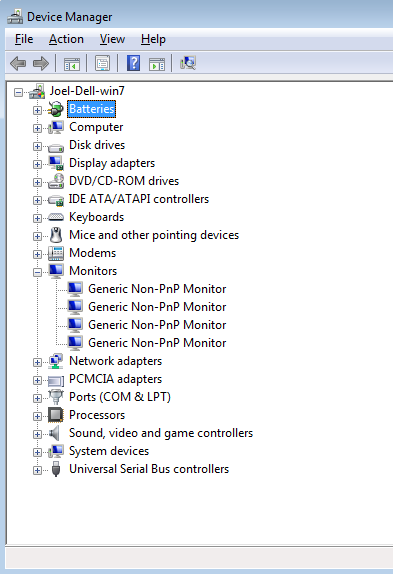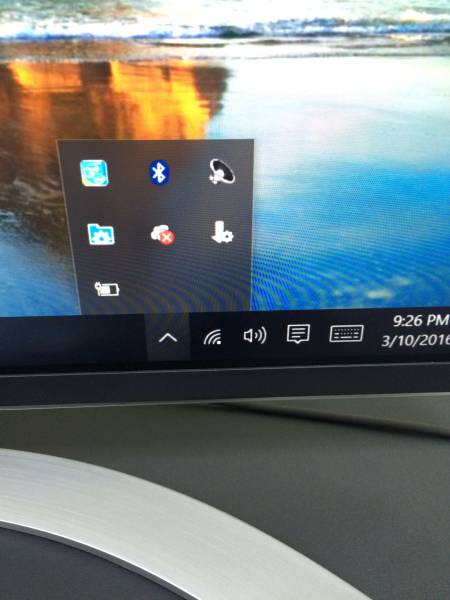Lg Monitor Resolution Not Correct
- After upgrading my PC to Windows 10, I found that I could no longer set my Vizio VMM26 monitor to display the correct resolution.Instead of my monitor's native resolution of 1920x1200 (16:10.
- Looks like, when you connect the external monitor and have a Duplicated picture (on both screens), the video card sends the same signal to both the laptop screen and the monitor. The signal has to be in some generic resolution (1024*768 in my case) which looks unoptimal on the external screen.
- Monitor Won't Display Correct Resolution
- Lg Monitor Resolution Not Correcting
- Definition Of Screen Frequency
- Lg Monitor Resolution Not Correct
- Windows Not Displaying Correct Resolution
- How To Change Monitor Resolution
- Computer Monitor Resolution Pixel
Monitor Won't Display Correct Resolution
I have a laptop (Acer Aspire 8730G) which runs a GeForce 9300M GS. Its native resolution is 1680x945 pixels. Now, I connected my monitor to it (LG E2250V-PN) with VGA (laptop only has a VGA or HDMI input but I do not own a HDMI cable) and set the lay-out to 'extend'. Everything works as it should, but:
My LG monitor cannot receive its native resolutions. When going to the Screen Resolutions options of Windows I can choose between these values:
NVidia control panel shows me this (running latest drivers 310.70 on Windows 8):
Cannot set recommended resolution to monitor. Ask Question. If the hardware is good, then check if the correct software is in place and properly configured. Tell us if you're using Windows, and which Windows version that is. Update: Well, your card certainly can provide this resolution.
I know I can add a 'custom resolution' but I have no idea what to put into these fields ('Timing'):
Any tips?
Hennes4 Answers
Okay, I solved it!
Go to your NVidia Control Panel and add a Custom Resolution.
Fill in your resolution (1920 and 1080 in my case) and then under the heading 'Timing' choose GTF (Generalized Timing Formula). For more information on advanced timings, see NVIDIA's website.
Bram VanroyBram VanroyLg Monitor Resolution Not Correcting
I've run into this issue and the problem was the cable. Make sure your cable supports 2k resolution and up.
Try to press Win+P to swap between dual monitor modes to extend your desktop. Maybe you are trying cloning both monitors. if it doesn't work, maybe your nVidia card is not detecting native resolutions of the external monitor.
Pressing Win+P did the trick for me. Looks like, when you connect the external monitor and have a Duplicated picture (on both screens), the video card sends the same signal to both the laptop screen and the monitor. The signal has to be in some generic resolution (1024*768 in my case) which looks unoptimal on the external screen. But when you select 'External Screen Only', the videocard can tailor the signal to that monitor only and the resolution immediately becomes better. That is my interpretation of what happened to me.
Not the answer you're looking for? Browse other questions tagged resolutionnvidia-graphics-cardexternal-display or ask your own question.
I got new monitor hp la2205 with recomended resolution 1680 x 1050 But when I'm trying to set resolution via display properties , the option 1680 x 1050 does not appear in list of modes
Graphics card : ATI Radeon HD 3450
OS : Windows XP sp3
What can be the issue ? Thanks
Connor W
Definition Of Screen Frequency
user37137user371375 Answers
What graphics card is your computer using? My first thought is that your graphics card can't deliver that resolution, or that the correct drivers aren't installed.
So you should first check whether your computer is even capable of delivering that resolution. (You can also update your question with information about your computer/graphics card - then fellow SuperUsers can help you determine if the hardware is good enough.)
If the hardware is good, then check if the correct software is in place and properly configured. Tell us if you're using Windows, and which Windows version that is.
Update: Well, your card certainly can provide this resolution. Next, download the latest ATI display driver (here is a direct link) and see if that helps!
Torben Gundtofte-BruunTorben Gundtofte-BruunAlso check if your monitor has been correctly detected. Check Device Manager > Monitors. If it has detected correctly it will display as the name and model no of your monitor, if not they it will display as Generic PnP Monitor. In this case you also will need to install the drivers that came with your monitor so that it can detect correctly along with it's resolution.
rzlinesrzlinesLg Monitor Resolution Not Correct
Had a similar problem and wasted a day fighting it. Hopefully this will help someone else in the same predicament. My configuration wasWindows 7 Ultimate, 32-bitHP dc7700 with built-in Intel graphics adapterBrand new Dell u2410 LCD monitor connected to the computer via a VGA cable
The problem was that I could select certain resolutions on the monitor (e.g. 1792x1344), but when I tried to set the monitor to its native resolution (1920x1200), I would get a black screen with a less then helpful message telling me to set the resolution to one of the supported resolutions such as '1920x1200 @ 60Hz', which is what I was doing in the first place.
I believe one of the following two things fixed the problem:
Turning the power off on both the computer and the monitor and then turning power on on the monitor first and then on the computer second. (simple, try that first)
Booting the system in the 'safe' mode, uninstalling (but NOT deleting!) the driver for the Graphics adapter (in my case it was labeled as an Intel Chipset), shutting the computer and starting Windows in normal mode. When the computer booted it recognized the graphics adapter as 'new' hardware and re-installed the driver. Then I was able to set the monitor resolution to 1920x1200. Note that during all this, the monitor was connected to the computer.
Earlier in the process, I did confirm the 1920x1200 resolution worked on the monitor by connecting it to another computer (Windows XP) using the same VGA cable.
Windows Not Displaying Correct Resolution
Are you using DVI or VGA cables to connect the screen? I will assume VGA.
If so are you using a display switch box? If so remove it, otherwise are you using the VGA cable that came with the screen or possibly a very old one? My thought here is that the DDC (effectively the resolution plug 'n' play) pins aren't connected.
If the monitor is connected via VGA, you should try to connect rather via DVI.
Otherwise, you can try and use PowerStrip.
See this tutorial how to Customize monitor resolution settings with PowerStrip, which says:
Two primary software components, the video driver and the monitor driver, affect the quality, resolution, and color depth of the image on your screen. As I mentioned, PowerStrip doesn’t replace your video driver; it supplements it. So Windows still uses the original video driver. One of the ways that you can use PowerStrip to supplement the video driver is to create custom resolutions.
See also this Powerstrip guide from which I quote:
How To Change Monitor Resolution
Powerstrip is very powerful, but also quite capable of causing your computer and display to stop 'communicating' properly, this could cause the display to start rolling, doubling or generally freaking out. It is important that you don't freak out as well. It is recommended that you know how to start up your computer in 'Safe' mode and 'VGA' mode, uninstall and reinstall drivers and get around in 'Device Manager' if you wish to use this software.
Computer Monitor Resolution Pixel
I would also recommend having backups to your data and creating a system restore point, before installing and using it.
